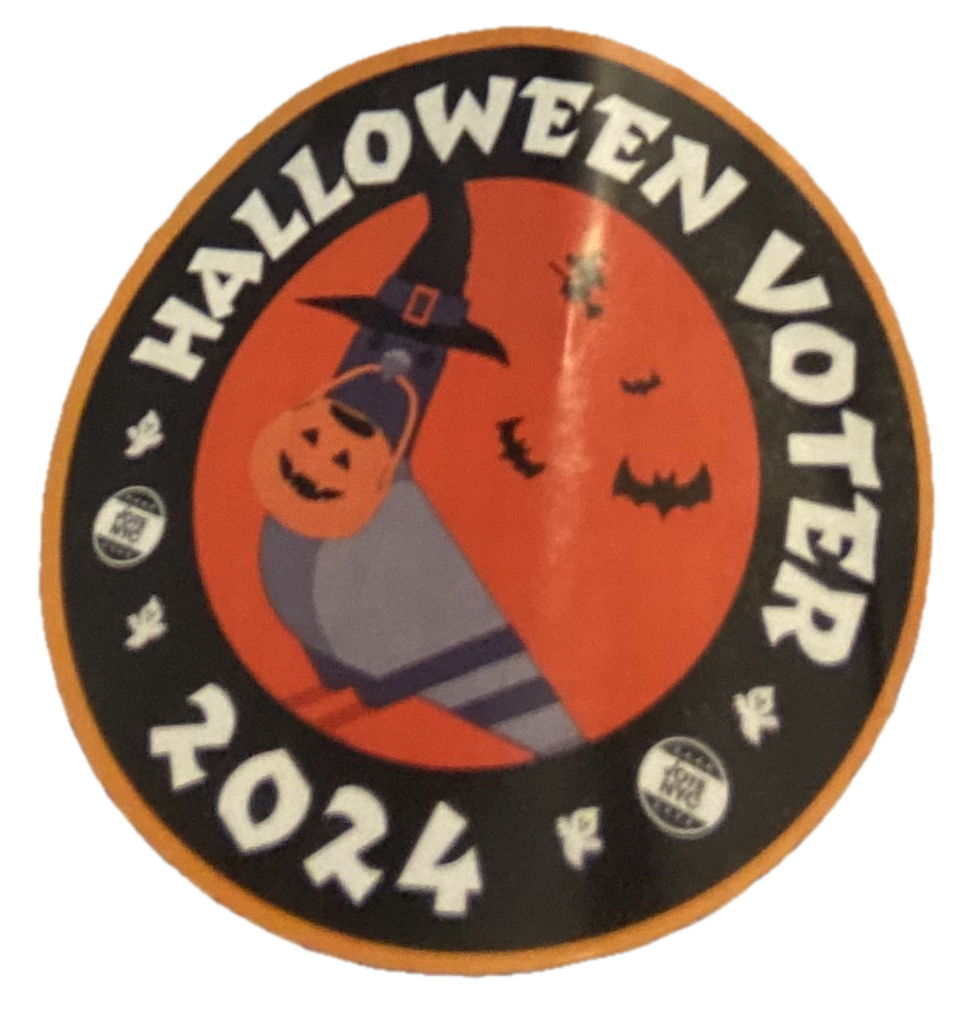Voting While Temporarily Disabled
I’m temporarily disabled: I fell and fractured my shoulder about a week and a half ago. My right arm is in a sling; I can’t write. It’s election season in the US, so I wondered what the experience would be like casting a vote in New York City. (Aside: I wrote this post with the assistance of dictation software. It mostly works…)

The first step in voting is to check in. New York City uses electronic poll books. You can either tell the poll worker who you are, or you can display a barcode that you were sent by the Board of Elections. In fact, a mailing that you will receive from the Board will include a QR code that you can use to download an electronic copy of this barcode to the wallet app on your phone. Naturally, I prefer this option, so I don’t have to clutter up my wallet or keychain with a piece of plastic I will use about twice a year.
You then sign the poll book. In New York City, that’s done with a stylus on a tablet. The poll worker can then compare your current signature with what on file. I can’t write with my right hand at the moment. What are the provisions in New York State election law for such a situation?
They’ve thought of this, of course. §8-304(2) says that
if such a person claims that he or she is unable to sign his or her name by reason of a physical disability incurred since the voter’s registration, the board, if convinced of the existence of such disability, shall permit him or her to vote, shall enter the words "Unable to Sign" and a brief description of such disability in the space reserved for the voter’s signature at such election.That isn’t quite what happened. Instead, the poll worker I talked to initially filled out some form and conducted me to some other desk. At this desk, I had to show my barcode again, at which point the machine printed out the appropriate ballot for me. It is unclear to me why I had to go to this separate desk or why a form was used instead of following the explicit provision of state law. If they had offered me a provisional ballot instead, I would’ve offered to come back with an attorney. (Aside: when I used my phone again to display my barcode, the person at this desk said "you can’t sign your name but you’re tech-savvy?" I replied that I was a computer science professor who just happened to have an injured arm. I’m sure that people with more permanent disabilities get this sort of nonsense all the time. I’m contemplating filing a complaint.)
The next issue is actually casting the ballot: I do not think I could accurately fill in the bubbles on the ballot writing with my left hand. Again, this is something provided for in state law: I can have assistance in filling out the ballot. New York City, though provides a better option: a ballot marking device in every precinct. Without going into details—see the linked-to the webpage—the machines, which can accommodate many kinds of disabilities, read and scan a regular ballot and let you vote. They then print the appropriate markings on the ballot and hand it back to you. The machine was slow and annoying to use—it used a resistive touchscreen—but it did the job. It then took forever to actually print the marked ballot. Being the sort of person that I am, and knowing something of the failure modes of BMDs, I checked the marked ballot to verify that all of the choices were as I had intended. They were; I took the ballot over to one of the scanners and actually cast the ballot.
Overall, I give the city and the state an A-. The personnel were properly trained, and (except for the crack about tech-savviness) were quite polite, and all of the necessary procedures and hardware were there. Of course, I would very much prefer not to have to vote this way again, but I could actually cast my ballot in privacy without someone else’s assistance.
